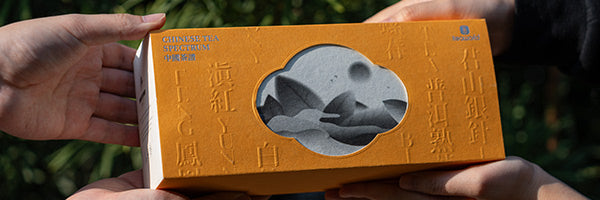Листовой зеленый чай является одним из самых любимых напитков в мире, особенно среди людей, заботящихся о своем здоровье. Известный своими многочисленными преимуществами для тела и разума, включая ускорение метаболизма, улучшение настроения, профилактику инфекций и уменьшение воспалений, он занимает важное место в оздоровительных процедурах. Однако, помимо своих достоинств, влияет ли листовой зеленый чай на уровень pH организма? Он кислый или щелочной? И почему этот аспект важен?
В этой статье мы углубимся в эти вопросы и не только. Изучаем тонкости pH, его влияние на самочувствие и то, как различные виды листового чая могут отчетливо влиять на равновесие pH вашего тела. Кроме того, мы предоставим бесценные идеи о том, как наслаждаться листовым зеленым чаем без ущерба для здоровья зубов или желудка.
Что такое pH и почему он важен?
pH — это мера кислотности или щелочности вещества. Он варьируется от 0 до 14, где 7 — нейтральность. Все, что ниже 7, является кислотным, а все, что выше 7 — щелочным.
Уровень pH жидкостей вашего организма, таких как кровь, слюна, моча и желудочная кислота, жестко регулируется вашим организмом для поддержания оптимального здоровья. Нормальный диапазон pH для крови составляет от 7,35 до 7,45, что означает слегка щелочной. Если уровень pH вашей крови падает ниже или выше этого диапазона, это может вызвать серьезные проблемы со здоровьем, такие как ацидоз или алкалоз.
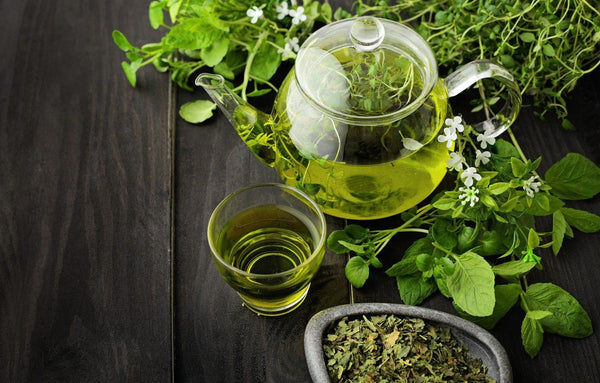
Уровень pH желудочной кислоты намного ниже, чем у крови, обычно от 1,5 до 3,5. Это необходимо для переваривания пищи и уничтожения вредных бактерий. Однако, если уровень желудочной кислоты становится слишком высоким, это может вызвать кислотный рефлюкс, изжогу, язву и гастрит.
Уровень pH слюны и мочи может меняться в зависимости от того, что вы едите и пьете, а также от других факторов, таких как стресс, прием лекарств и физические упражнения. Нормальный диапазон pH слюны составляет от 6,5 до 7,5, тогда как нормальный диапазон pH мочи составляет от 4,5 до 8.
Уровни pH разных видов чая
Разные сорта чая имеют разный уровень pH, что указывает на их кислотность или щелочность:
- Зеленый чай: имеет уровень pH от 7 до 10.
- Черный чай: pH колеблется от 4,99 до 5,55.
- Чай улун: pH колеблется от 5,9 до 8,2
- Травяной чай: обычно имеет pH в диапазоне от 6 до 7.
- Белый чай: уровень pH варьируется от 6,9 до 9,7.
- Чай пуэр: обычно имеет pH в диапазоне от 4,5 до 5,5.
- Ромашковый чай: средний уровень pH составляет от 6,8 до 7,5.
- Чай ройбуш: обычно имеет pH от 5,5 до 7.
Согласно предыдущему списку, зеленый чай скорее щелочной, чем кислотный.
Разбавление нейтральными веществами, такими как вода или молоко, часто используется для балансировки кислотности в чае. Более короткое время заваривания значительно снижает кислотность, при этом чай выделяет больше кислоты через пять минут и значительно повышается через 15 минут. Оптимальные вкусовые характеристики листового чая обычно развиваются через 2–5 минут заваривания.
Если вас интересует листовой зеленый чай, мы предлагаем вам попробовать наш образец зеленого чая , который идеально подходит для новичков, чтобы открыть для себя их любимый вкус. Кроме того, iTeaworld предлагает отличный китайский листовой улун и листовой черный чай .
Какой вкус у зеленого чая?
Зеленый чай Китая имеет тонкий, но характерный вкус, который отличает его от других видов чая. При первом глотке вы можете заметить, что он слегка горький или вяжущий. Это связано с полифенолами, которые естественным образом присутствуют в зеленом чае. Однако горечь мягкая и часто уравновешивается травянистыми, растительными нотками.
Поскольку зеленый чай имеет мягкий вкус, его лучше всего употреблять без дополнительных ингредиентов, таких как молоко или сахар. Это позволяет проявиться тонким вкусам. На вкус вы можете обнаружить нотки весны или только что скошенной травы. Иногда также присутствуют тонкие нотки пряности, напоминающие черный перец. Вкус овощей легкий и приятный, но никогда не навязчивый. Хороший китайский зеленый чай имеет гораздо более тонкий, нюансированный вкус, чем черный чай, который может иметь сильный, подавляющий вкус. Танины, которые мягко покрывают губы, обеспечивают чистое, хотя и слегка хрустящее послевкусие. Зеленый чай отличается от других сортов чая тем, что у него легкий, естественно сложный вкусовой профиль. Это делает его приобретенным вкусом для некоторых людей.
Как долго заваривать зеленый чай?
Время заваривания хорошего китайского зеленого чая может варьироваться в зависимости от личных предпочтений, конкретного вида зеленого чая и желаемой крепости чая. Обычно рекомендуется заваривать зеленый чай в течение 2–3 минут.
Слишком долгое заваривание зеленого чая может привести к горькому вкусу, поэтому важно следить за временем заваривания. Если вы предпочитаете более мягкий вкус, вы можете начать с более короткого времени заваривания, около 1-2 минут. С другой стороны, если вы предпочитаете более крепкий и насыщенный вкус, вы можете увеличить время заваривания до 3-4 минут.
Часто задаваемые вопросы
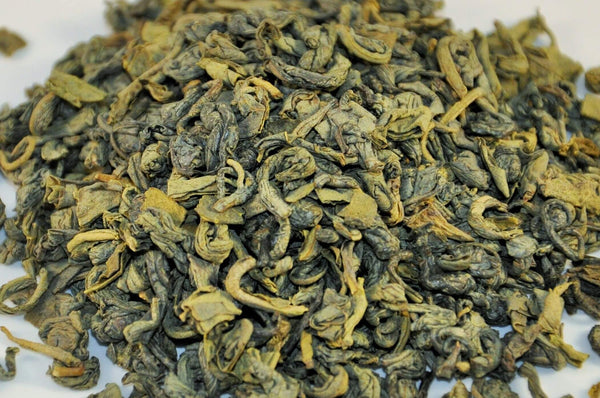
Как зеленый чай влияет на уровень pH?
Зеленый чай производится из листьев растения Camellia sinensis, которые пропариваются или обжариваются на сковороде, чтобы предотвратить окисление. Этот процесс сохраняет натуральные антиоксиданты и полифенолы в чайных листьях, которые придают листовому зеленому чаю его характерный цвет и вкус.
Зеленый чай содержит несколько органических кислот, таких как лимонная кислота, яблочная кислота, щавелевая кислота и аскорбиновая кислота (витамин С). Эти кислоты способствуют вкусу и аромату зеленого чая, но они также снижают его уровень pH. Средний pH листового зеленого чая составляет около 7-10, что означает слегка кислый.
Однако кислотность зеленого чая может варьироваться в зависимости от нескольких факторов, таких как:
- Тип зеленого чая: Разные сорта зеленого чая имеют разный уровень кислотности. Например, зеленый чай сенча имеет pH около 5,5, а зеленый чай матча — pH около 7.
- Метод заваривания: чем дольше вы замачиваете чайные листья в горячей воде, тем кислее становится чай. Например, заваривание зеленого чая в течение 3 минут может привести к pH около 6,5, а заваривание в течение 10 минут может привести к pH около 4,5.
- Качество воды: pH воды, которую вы используете для заваривания чая, также может влиять на кислотность чая. Например, использование дистиллированной воды может привести к более кислому чаю, чем использование водопроводной или минеральной воды.
- Добавки: Добавление сахара, меда, лимонного сока, молока или сливок в зеленый чай также может изменить его уровень pH. Например, добавление лимонного сока может снизить pH зеленого чая примерно на 0,5 единицы.
Как уменьшить кислотность зеленого чая?
Если вас беспокоит кислотность зеленого чая и ее потенциальное воздействие на зубы или желудок, есть несколько способов ее уменьшить или нейтрализовать.
Вот несколько советов:
- Выбирайте менее кислый тип зеленого чая: Как уже упоминалось выше, разные сорта зеленого чая имеют разный уровень кислотности. Вы можете выбрать зеленый чай матча или другие щелочные чаи, такие как ройбуш или травяные чаи.
- Заваривайте зеленый чай в течение более короткого времени: Чем дольше вы замачиваете зеленый чай в горячей воде, тем более кислым он становится. Вы можете сократить время заваривания до 2 минут или меньше, чтобы поддерживать низкую кислотность.
- Используйте фильтрованную или минеральную воду: Качество воды, которую вы используете для заваривания зеленого чая, также может влиять на его кислотность. Вы можете использовать фильтрованную или минеральную воду.

В чем разница между зеленым чаем и матча?
Хотя и зеленый чай Китая , и матча получают из растения Camellia sinensis, есть некоторые ключевые различия в том, как они обрабатываются и готовятся. Зеленый чай изготавливается путем обжаривания на сковороде или пропаривания свежих чайных листьев для предотвращения окисления, что останавливает ферментацию. Затем листья сушат, а затем заливают горячей водой замоченные листья, чтобы получить напиток. Матча, с другой стороны, представляет собой нежные чайные листья, выращенные в тени, которые затем измельчаются в ярко-зеленый порошок.
Переработка матча в порошок позволяет потреблять весь лист, включая богатые антиоксидантами клеточные стенки. В результате матча содержит в 10 раз больше EGCG и антиоксидантов, чем обычный заваренный зеленый чай. Кроме того, матчу готовят путем взбивания порошка в горячей воде, а не путем заваривания и удаления чайных листьев. Это означает, что матчу обеспечивает полноценный опыт цвета, текстуры, вкуса и питательных веществ с каждым употреблением. Благодаря использованию целого листа, матчу также присуща более смелая, кремовая текстура и заметно более выраженный пикантный вкус Умами, чем заваренный зеленый чай.
Окрашивает ли зеленый чай зубы?
Хороший китайский зеленый чай часто избегает обвинений в окрашивании зубов по сравнению с несколькими ежедневными продуктами. Его более высокая щелочность предполагает, что обычно наблюдаемые пятна на зубах могут иметь корни в других ваших диетических предпочтениях.
Кислоты, присутствующие в таких продуктах, как цитрусовые, конфеты, газированные напитки, томатные соусы, вина и уксусы, представляют собой более существенный риск. Они, как правило, разрушают зубную эмаль, прокладывая путь к потенциальному изменению цвета. И давайте не будем упускать из виду кофе, печально известного игрока в изменении баланса pH полости рта и усиления уязвимости зубов к пятнам от других продуктов.
Новые идеи намекают на потенциальные средства для смягчения окрашивающей способности зеленого чая. Капля молока или сливок в вашем чае может противодействовать его окрашивающей способности, согласно некоторым исследованиям. В качестве альтернативы включение сырых овощей в ваш режим может создать защиту полости рта от окрашивания. Однако, если овощи не соответствуют вашей чашке, ритуал чистки зубов после чая может послужить вашей защитой.
Что такое катехины?
Катехины — это тип антиоксидантов, которые содержатся в листьях чая. Это полифенолы, которые относятся к группе натуральных растительных химикатов, известных как флаванолы. Зеленый чай Китая , белый чай, улун и черный чай содержат различные количества катехинов.
Основные катехины, содержащиеся в чае, — это эпигаллокатехин галлат (EGCG), эпигаллокатехин (EGC), эпикатехин галлат (ECG) и эпикатехин (EC). EGCG считается самым мощным катехином и составляет около 50-80% от общего количества катехинов в зеленом чае.
Считается, что катехины приносят много пользы здоровью благодаря своим мощным антиоксидантным свойствам. Как антиоксиданты, они борются со свободными радикалами и помогают предотвратить повреждение клеток, вызванное окислительным стрессом. Катехины изучались на предмет их потенциальной способности снижать риск сердечных заболеваний, нейродегенеративных состояний и некоторых видов рака. Они также могут способствовать снижению веса и контролировать уровень сахара в крови.
Вызывает ли зеленый чай дефекацию?
Поскольку хороший китайский зеленый чай содержит кофеин и катехины, есть некоторые свидетельства того, что он может стимулировать кишечник и способствовать его регулярности. Известный стимулятор кофеин обладает способностью как расслаблять, так и сокращать кишечник. Кроме того, он заставляет желчный пузырь сокращаться сильнее, что облегчает прохождение пищи через пищеварительную систему.
Между тем, было показано, что катехины зеленого чая обладают пребиотическими свойствами, которые способствуют развитию полезных бактерий в микробиоте кишечника. Это способствует лучшему пищеварению и, увеличивая объем, может смягчить стул. Согласно исследованиям, употребление зеленого чая может помочь сократить время, необходимое для прохождения отходов через кишечник.
Однако индивидуальные реакции различаются. В течение часа после употребления зеленого чая из Китая некоторые люди могут заметить небольшое послабление стула или увеличение частоты дефекаций, в то время как другие могут вообще не заметить никаких изменений. На результаты могут влиять такие переменные, как здоровье кишечника, текущая диета и переносимость кофеина. Зеленый чай оказывает умеренное слабительное действие на большинство людей. Однако он оказывает многим людям небольшую помощь пищеварению, способствуя регулярности стула.
Имеет ли зеленый чай срок годности?
Да, зеленый чай из Китая в конечном итоге портится, но сроки годности зависят от нескольких факторов. Правильно хранящийся высококачественный зеленый чай может оставаться свежим в течение 1-2 лет. Некоторые факторы, влияющие на срок годности, включают:
● Метод обработки: Листовой чай обычно хранится дольше, чем пакетированный, поскольку он не закрыт. Улун и белый чай портятся быстрее, чем зеленый чай.
● Условия хранения: Чай следует хранить в герметичном контейнере в прохладном, темном месте, вдали от тепла, света и влаги. Охлаждение еще больше продлевает срок годности.
● Натуральные масла: Ароматические масла в чае могут со временем прогоркнуть, изменив вкус. Чаи с более высоким содержанием масел, такие как матча, могут испортиться быстрее.
● Влажность: Избыток влаги может привести к быстрому старению чая. Правильная сушка после производства имеет важное значение.
● Качество: более свежий, высококачественный чай с меньшим количеством сломанных листьев дольше сохранит свежесть.
Чай с истекшим сроком годности может иметь несвежий, затхлый или слабый вкус, а не яркий и насыщенный. Изменение цвета также является признаком того, что он уже не на пике свежести. Лучше выпить чай в течение 1-2 лет для оптимального вкуса и пользы.
Полезен или вреден для здоровья зеленый чай?
Употребление зеленого китайского чая может оказать как положительное, так и отрицательное воздействие на ваше здоровье, в зависимости от того, сколько вы пьете и насколько вы чувствительны к его кислотности.
С положительной стороны , употребление зеленого чая может:
- Обеспечивают антиоксидантами и полифенолами, которые защищают клетки от окислительного стресса и воспаления.
- Улучшите обмен веществ и сжигание жира за счет стимуляции термогенеза и увеличения расхода энергии.
- Улучшите свое настроение и когнитивные функции, повысив уровень дофамина и серотонина в мозге.
- Предотвращайте инфекции и заболевания, подавляя рост бактерий и репликацию вирусов.
- Снижайте артериальное давление и уровень холестерина за счет расслабления кровеносных сосудов и уменьшения воспаления.
- Снизьте риск развития рака, модулируя экспрессию генов и вызывая апоптоз (гибель клеток) в опухолевых клетках.
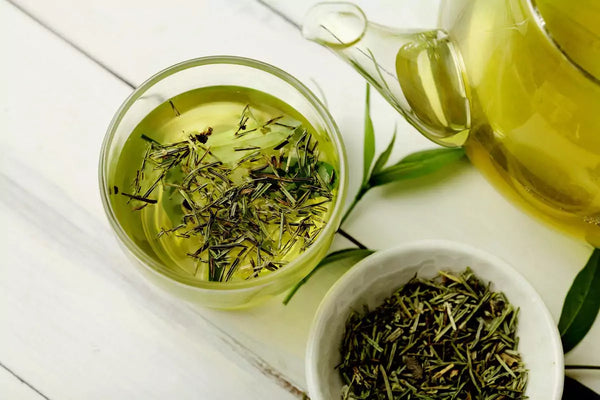
С другой стороны , употребление слишком большого количества зеленого чая или его употребление натощак может привести к раздражению желудка, вызывая тошноту или дискомфорт из-за относительно высокого содержания кофеина. Чрезмерное потребление, особенно натощак, может вызвать кислотный рефлюкс или усугубить существующие желудочно-кишечные проблемы.
Найти баланс в потреблении зеленого чая крайне важно для извлечения пользы и одновременного устранения потенциальных недостатков. Чрезмерное употребление может привести к нарушению сна, нервозности или даже повышенной тревожности у чувствительных людей из-за содержания кофеина. Более того, кислотность зеленого чая может создавать проблемы для людей с рефлюксом или чувствительным желудком, вызывая дискомфорт при употреблении в больших количествах или натощак.
Умеренность имеет решающее значение; употребление умеренного количества зеленого чая, обычно около 3-4 чашек в день, позволяет людям использовать его полезные свойства для здоровья, не испытывая побочных эффектов. Кроме того, перерывы между чашками или употребление его во время еды могут помочь смягчить его кислотное воздействие на желудок.
Содержит ли зеленый чай кофеин?
Действительно, зеленый чай Китая содержит кофеин, хотя и в более мягких дозах по сравнению с кофе. Чашка на 8 унций обычно содержит около 35 мг кофеина, предлагая мягкий тонизирующий эффект без сильного встряски, часто ассоциируемого с более высоким содержанием кофеина в кофе.
Зеленый чай более кислый, чем кофе?
В области кислотности зеленый чай стоит отдельно от кофе. Обычно обладая более низким уровнем кислотности, зеленый чай иногда склоняется к щелочности, демонстрируя уровни pH, достигающие 10. Тем не менее, точная кислотность варьируется в зависимости от методов заваривания и любых добавленных элементов. Важно отметить, что некоторые бутилированные зеленые чаи могут повышать свою кислотность из-за добавленных сахаров или добавок. Кроме того, зеленый чай также содержит кофеин, который может усугублять кислотность и вызывать побочные эффекты в избытке. Старайтесь употреблять зеленый чай в умеренных количествах, если вы в остальном здоровый человек.
Как заваривать зеленый чай?
Чайная утварь:
В отличие от других китайских чаев , зеленый чай лучше заваривать в стакане .
Потому что прелесть зеленого чая не только во вкусе, но и в том, что при заваривании зеленого чая чайные листья спускаются с неба, словно танцующая фея с длинными рукавами.
Поэтому использование стеклянных чашек для заваривания известных сортов чая позволяет легче оценить внешний вид и внутреннюю текстуру чайных листьев.
Температура воды:
Зеленый чай обычно нежен, температура воды для заваривания зеленого чая обычно составляет 80℃-90℃.
Конечно, для разных сортов зеленого чая будут использоваться разные методы заваривания. В зависимости от сорта зеленого чая, его нежности и т. д. существует три различных метода заваривания: метод заваривания снизу вверх, метод заваривания снизу вверх и метод заваривания снизу вверх.
Нажмите на следующую статью, чтобы узнать подробности.
Как правильно заваривать зеленый чай — пошаговое руководство с фотографиями
Нарушает ли зеленый чай пост?
Влияние зеленого чая на пост может варьироваться в зависимости от типа поста и индивидуальных обстоятельств. Как правило, простой зеленый чай без каких-либо добавок, таких как сахар или молоко, считается некалорийным и низкокалорийным, содержащим минимальное количество макронутриентов или не содержащим их вовсе.
Во время прерывистого голодания или определенных протоколов голодания, таких как голодание на воде, употребление простого, несладкого зеленого чая часто допускается без существенного нарушения поста. Его низкокалорийность и потенциальные преимущества, такие как антиоксиданты, могут не вызывать инсулиновую реакцию или существенно мешать состоянию голодания у многих людей.
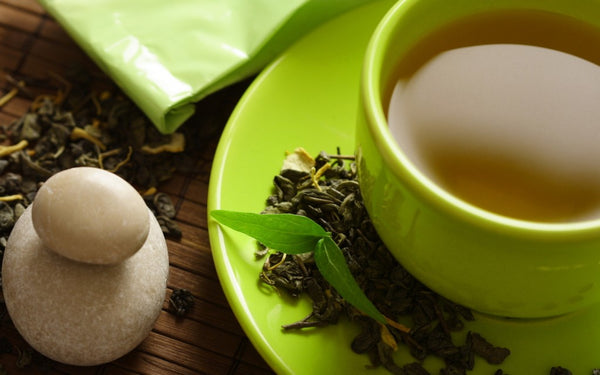
Помогает ли зеленый чай при вздутии живота?
Да, считается, что зеленый чай помогает при вздутии живота по нескольким причинам:
- Натуральный диуретик: Зеленый чай действует как натуральный диуретик, помогая снизить задержку воды в организме. Это может помочь облегчить чувство вздутия живота, вызванное избытком воды.
- Противовоспалительные свойства: Зеленый чай содержит антиоксиданты, обладающие противовоспалительными свойствами. Вздутие живота иногда может быть вызвано воспалением в пищеварительной системе, и эти свойства могут помочь уменьшить этот дискомфорт.
- Помощь пищеварению: Предполагается, что соединения в зеленом чае, такие как катехины и полифенолы, поддерживают здоровье пищеварительной системы, способствуя здоровой среде кишечника. Улучшение пищеварения может снизить вероятность вздутия живота.
Однако индивидуальные реакции на зеленый чай могут различаться. Некоторые люди могут почувствовать облегчение от вздутия живота, включив зеленый чай в свой режим, в то время как другие могут не получить тех же преимуществ. Если вздутие живота является постоянной или серьезной проблемой, важно проконсультироваться с врачом, чтобы определить основную причину и наиболее подходящее лечение.
Рекомендуемый зеленый чай
В Китае очень много зеленых чаев. Среди десяти самых известных китайских чаев есть несколько зеленых чаев, которые часто встречаются в списке, например , Лунцзин, Билуочунь, Хуаншань Маофэн и т. д. Если вы пробуете зеленый чай впервые, рекомендуется начать с этих зеленых чаев, которые известны всем. Конечно, лучшим выбором будет купить пробник зеленого чая . Это позволит вам выпить несколько видов зеленого чая за один раз и покупать их в небольших количествах, чтобы избежать отходов.
Кому не следует пить зеленый чай?
Хотя зеленый чай в целом безопасен для большинства здоровых людей в умеренных количествах, существуют определенные группы людей, которым следует рассмотреть возможность ограничения или отказа от его потребления:
- Беременные женщины: Ограничьте потребление до 6 чашек в день из-за содержания кофеина. Более высокие дозы связаны с повышенным риском выкидыша и врожденных дефектов.
- Кормящие женщины: Ограничьте потребление кофеина до 2–3 чашек в день. Избыток кофеина может проникать в грудное молоко и потенциально влиять на младенца.
- Определенные состояния здоровья: Людям с определенными проблемами со здоровьем следует быть осторожными с потреблением зеленого чая. Такие состояния, как анемия, тревожные расстройства и желудочно-кишечные проблемы, такие как диарея (связанная с синдромом раздраженного кишечника или нет), могут ухудшиться при употреблении зеленого чая.
- Нарушения свертываемости крови: Избегайте употребления зеленого чая, так как он может повысить риск кровотечения, особенно у людей с нарушениями свертываемости крови.
- Остеопороз: ограничьте потребление зеленого чая до 6 чашек в день, так как чрезмерное употребление зеленого чая может повлиять на здоровье костей.
- Сердечно-сосудистые заболевания и высокое кровяное давление: Кофеин, содержащийся в зеленом чае, может оказать негативное воздействие на людей с сердечными заболеваниями, судорогами или высоким кровяным давлением.
- Диабет: Зеленый чай может влиять на уровень сахара в крови, поэтому людям, страдающим диабетом, следует следить за его потреблением и его влиянием на уровень глюкозы.
- Глаукома: Зеленый чай может повышать внутриглазное давление, поэтому людям с глаукомой следует соблюдать осторожность при его употреблении.
Вам также может понравиться: 15 главных преимуществ китайского зеленого чая для здоровья


































































